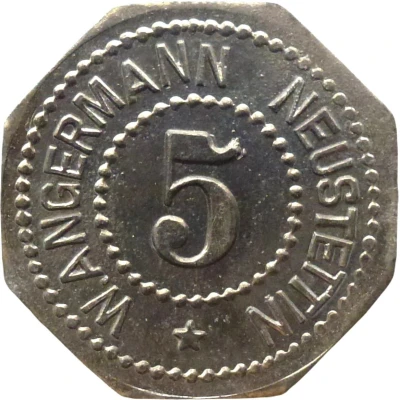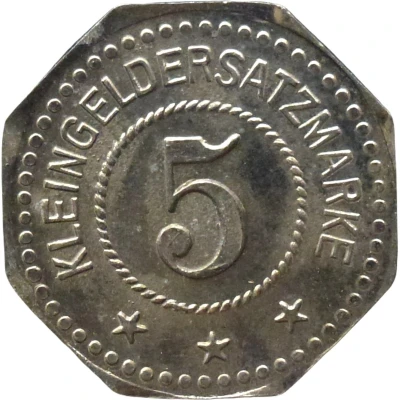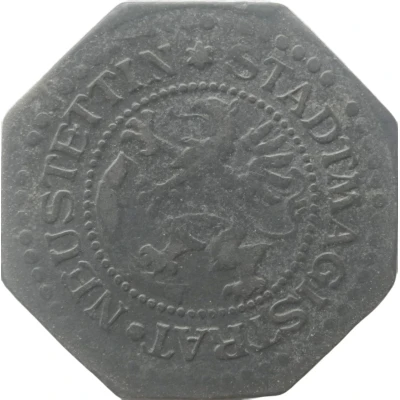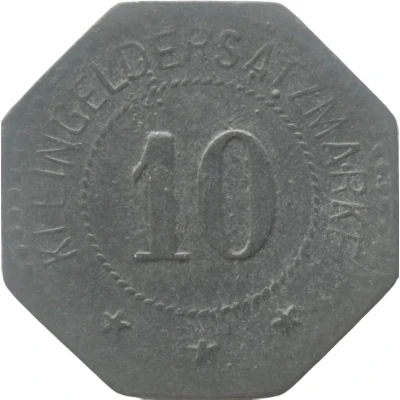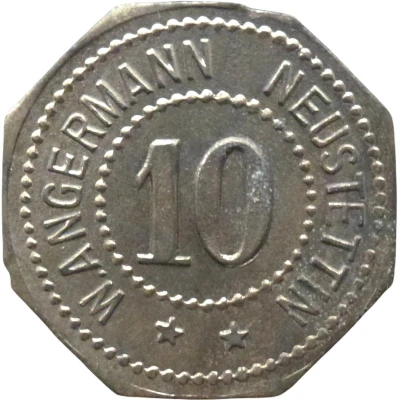
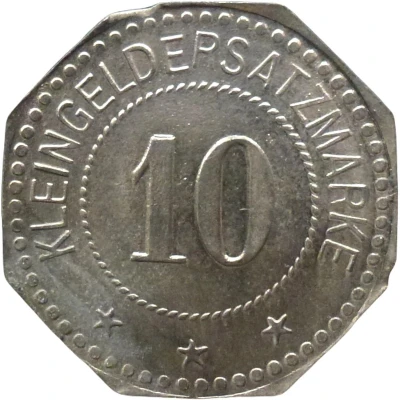

© Willem63 (CC BY-NC-SA)
10 Pfennigs - Neustettin (W. Angermann) ND
| Nickel plated zinc | 1.8 g | 20.8 mm |
| Issuer | City of Neustettin (Prussian province of Pomerania) |
|---|---|
| Type | Standard circulation coin |
| Value | 10 Pfennigs (10 Pfennige) (0.10) |
| Currency | Mark (1914-1924) |
| Composition | Nickel plated zinc |
| Weight | 1.8 g |
| Diameter | 20.8 mm |
| Thickness | 1.0 mm |
| Shape | Octagonal (8-sided) |
| Technique | Milled |
| Orientation | Medal alignment ↑↑ |
| Demonetized | Yes |
| Updated | 2024-10-04 |
| Numista | N#343958 |
|---|---|
| Rarity index | 97% |
Reverse
Pearl rim, legend surrounding rope circle with denomination centered
Script: Latin
Lettering:
KLEINGELDERSATZMARKE
10
★ ★ ★
Edge
Plain
Comment
Menzel: BBBFa.: Brutapparatefabrik (Incubators factory)
Interesting fact
One interesting fact about this coin is that it was minted during a time of great economic and political change in Germany. The 10 Pfennigs coin was introduced in 1924, during the hyperinflation period following World War I, when the value of the German mark was rapidly decreasing. The coin was made of nickel-plated zinc, a cheaper alternative to traditional metals like silver or gold, which were scarce at the time. Despite its low value, the coin was an important symbol of the efforts to stabilize the German economy and restore confidence in the financial system.
